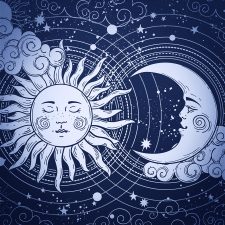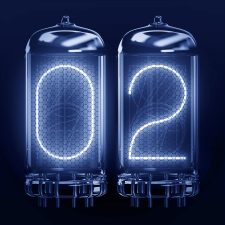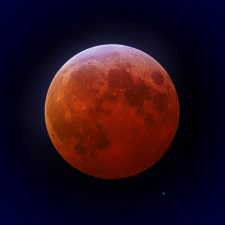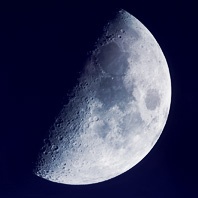The words “full moon” in many languages

It is said that there are more than 6,000 languages worldwide (this is hard to imagine) and it is a fascinating concept to think, there are probably as many words for “full moon”.
Here we begin our little journey to the full moon. A few words about the fascinating quest of the greater purpose, that includes the full moon circulating through our lives. In layman’s terms and not always scientific (astronomy experts – don’t look too closely!). We would like to wish you illuminating moments. Enjoy!


It is said that there are more than 6,000 languages worldwide (this is hard to imagine) and it is a fascinating concept to think, there are probably as many words for “full moon”.

A full moon is when the Sun and the Moon are facing opposite, being in opposite direction from an Earth perspective.
This might feel astonishing if one imagines that the Moon is on one side, the Sun on the other and the Earth in between? Shouldn’t the Earth throw a shadow onto the Moon? Bingo – this is exactly what she does! But only when the Moon is exactly on the Earth orbit, the so called “ecliptic”. When this takes place, we speak of a lunar eclipse!

The Moon needs 27.33 days to circle around the Earth. Something that is also referred to as “sidereal time”. But because the Earth orbits the Sun, just like the Moon orbits the Earth, the Moon has to travel two further days in order to resume the same position to the Earth and Sun. This is then called the “sidereal time”. In order to determine the point of time of the reoccurring full moon, the sidereal time serves as basis.

We already know now that the moon month is mostly shorter than the calendar month, being on average approximately 29.5 days. If full moon falls on the first or second of a month, it is possible that another full moon occurs in the same month, for instance in July 2004:
Friday, 2 July 2004, 01:08:54 pm
Saturday, 31 July 2004, 08:05:06 pm
This event is also known as “blue moon”.

The answer is: “everywhere at the same time”. This refers to the so called Universal Time (UT) though, which is used for general astronomical events. We have already learnt that full moon is an astronomical event, where the moon, sun and the earth play a role by being in a specific position. So, full moon takes place at a specific time in the outer space. This point of time is specified by astronomers namely by the Universal Time.

There are multiple ways of approaching this question. If we look at it from a purely theoretical standpoint, we might be tempted to say that the full moon is infinitely short, since the phases of the moon are changing continuously. The moon is not yet quite full shortly before the full moon, and is already waning shortly afterwards.
However, there is a practical aspect that lets us quantify the full moon as a finite and measurable span of time: Since the Sun is significantly bigger than the Moon, its rays are able to reach just a little over half of the Moon’s surface. This means that the timespan in which the visible side of the Moon’s surface is irradiated (as seen from Earth) is longer than infinitely short.

Whether scientists, astrologers or esoterics, they agree on one thing: the moon influences earth and life on earth. For instance, it regulates the tides through its magnetism. Also continents feel the consequence of this magnetism and either raise or lower their position sometimes up to 26 cm.

In nature it is a known fact: for some animal species, mating takes place at full moon. However, the examples that can be found on this subject are rather simple. Full moon serves in some cases indirectly as the cause (for instance through the high water levels during the tides that the horseshoe crab uses to deposit its eggs) or also as the signal for both sexes of a species to begin at the exact same time to safeguard their future existence (a particular type of fly or also corals). It is understood that also wolves are led by full moon when it is time to mate.

… that people are looking for an argument at full moon or are especially happy …
… that if full moon is surrounded by a haze, a person dies …
… that you raise your hat three times to the moon (being a man) or you make a curtsey (being a woman), in order to protect yourself from misfortune until the next full moon …
… that whoever does not chink glasses with full moon at least once, does not deserve any happiness [Greek toast] …

During a lunar eclipse, the Moon moves through the shadow of the Earth. Which means, that the Earth is positioned quite exactly between the Sun and Moon and casts its shadow onto the Moon. This is only possible at full moon and if some other requirements are met. Depending on whether the moon passes the partial or the core shadow of the Earth, we speak of a partial or total lunar eclipse.

Lions mostly hunt in the dark, as predators have more of an advantage if it is as dark as possible. Hence, the moonlight is a disturbing factor, because it makes the predators easily detectable by their prey. And when the full moon is actually in the sky, it then so happens, that the lions occasionally come away empty-handed. Thus commences a time at full moon (and shortly before), where the lions begin to starve and hence their urge to hunt increases.

Bathing during the full moon or in the full moon light, is a fascinating experience, which one or the other has surely made. Two ways to interpret this is either bathing in the water at the full moon (outdoors or in the bath tub), or bathing directly in the moonlight (when the light of the Moon shines onto your skin, just like sunbathing).

When inviscid lava flows out of the volcano, it is possible that cavities are created inside the conduits, due to the different speeds of flow and temperatures. It is like a roof being formed above the flow of lava, which continues to flow inside. After cooling of the rocks, tubular cavities remain.
This phenomenon exists on Earth when volcanoes erupt, and scientists assume that those tubes and cavities could also be prevalent on the Moon, dating from a time when vulcanoes were still active there. The lesser gravity benefited the formation of the tubes and might have also contributed to the fact that there could be kilometer-sized cavities underneath the Moon’s surface.

»Moon blindness« (lat. morbus lunaticus) has nothing to do with the moonlight and luckily does not afflict humans. It is a disease of the eyes of horses, which recurs periodically. Due to an inflammation of the iris, which is caused by bacteria from food that has been contaminated by mice and rats, the cornea of the eye can cloud over. This leaves a bluish color, which gave the illness its name (even though the moonlight is not blue). If this inflammation continues to happen in an interval of months, it is possible that over the years it can lead to complete blindness of the animal. There is the option of an eye operation in the early stage of the illness, however, this is not straightforward.

Other than the moonstone, there are more minerals with the Moon being part of their name: the moonlight topaz. The topaz is a compound of aluminum, fluorine and silicon and has the hardness value of 8, on the Mohs scale of mineral hardness from 1 (= selenite) to 10 (= diamond). Which means it is a very hard mineral. Topazes exist worldwide, but most findings originate in Brazil. When conditions are favorable for the growth of this mineral, their weight can easily reach up to 220 lb and more. The biggest topaz that was ever found, was 3.3 ft long and weighed 2.5 tons (Mozambique, Africa).

Astrology, the teaching of the interpretation and meaning of star constellations for human life, shows once again the sun’s dominance in our society and the insignificant role the Moon plays. Everyone knows »his/her« sign of the zodiac, meaning the position of the Sun at the time of their birth. If you say, for example, »I am an Aquarius«, you refer to the fact that the Sun was positioned in the astrological sign Aquarius when you were born. Also, some people are still aware of the ascendant, being the sign, which was on the eastern horizon at the time of birth (lat. ascendere = to rise). But which sign the Moon is in their birth horoscope, only very few people know.

The moths »Actias luna« and »Actias selene« in the family of Saturniidae, carry the Moon in their name – maybe because they are attracted to light and we connect them with the night; although, they can also be active during the day. But perhaps it is because of the crescent shaped wings or the pattern on top of the wings, which remind us of eyes that may have contributed to the naming. Luna is the moon goddess in Roman mythology, Selene is the equivalent in Greek mythology.

No, this is not about another sequel of the science fiction movie or whether Arnold Schwarzengger is planning a trip to the moon … It is more about an astronomical term, where »terminator« describes the day-night border of a celestial body. This is the visible border between the illuminated side and the dark side of the object, being the border between day and night on the celestial body. The word »terminator« derives from Latin »terminare« = conclude, restrict.

Everyone knows that the sun is much larger than the moon and much further away from earth. In this very context lies a fascinating fact: both celestial bodies appear to be of similar size on the firmament, when observed from earth. Which implies that the sun has to be as many times bigger than the moon, as it is further away from the earth than the moon from the earth …

When the sun light is reflected and diffracted in fine water droplets in the air, a rainbow arises. So what happens if the same occurs in the moon light, is there also going to be a rainbow? Well, we find the idea of a moon rainbow quite fascinating …
Let’s take a short detour into physics. What we recognise in a rainbow as an arched bow made of colourful light, are the spectral colours that develop when the “white” sunlight fans out in its different wavelenghts, which we perceive in different colours. This decomposition does also take place, when the light is sent through a glass prism.